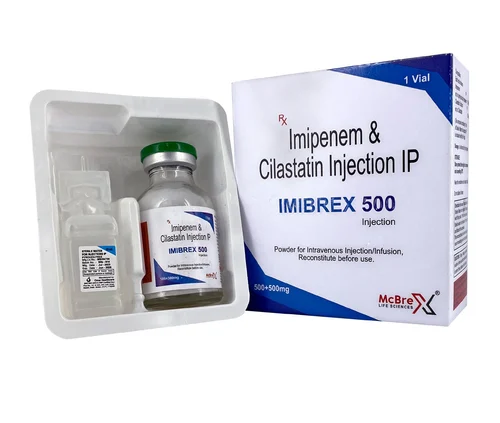
Duloxetine (Cymbalta) is a medication used to treat a variety of mental health and physical conditions. It belongs to the class of drugs serotonin-norepinephrine reuptake inhibitors (SNRIs). This article explores its drug class, mechanism of action, uses, side effects, interactions, contraindications, and popular brand names.
Drug Class of Duloxetine
It belongs to the Serotonin-Norepinephrine Reuptake Inhibitor (SNRI) class.
SNRIs help regulate mood and pain perception by increasing the levels of serotonin and norepinephrine in the brain.
Mechanism of Action
Duloxetine inhibits the reuptake of serotonin and norepinephrine; these two neurotransmitters have key roles in mood regulation and pain management.
It helps improve mood and decrease pain sensitivity by increasing these neurotransmitters.
Uses of Duloxetine
Duloxetine has the following uses.
1. Major Depressive Disorder (MDD)
Duloxetine’s primary use is to treat major depressive disorder by improving mood and overall well-being.
2. Generalized Anxiety Disorder (GAD)
It reduces the excessive worry, restlessness, and physical tension caused by generalized anxiety disorder.
3. Chronic Pain
There are many conditions of chronic pain which are managed and treated by it.
- Fibromyalgia
In fibromyalgia, individuals suffer from muscle pain and tenderness. Duloxetine helps relieve this condition. - Diabetic Neuropathy
Diabetic neuropathy is a complication of diabetes that affects nerves in the limbs. Duloxetine treats the pain due to this condition. - Osteoarthritis
It improves motility and can ease osteoarthritis pain.
-
Stress Urinary Incontinence
Duloxetine is used to treat bladder stress urinary incontinence. This disease causes involuntary urine leakage during routine daily physical activities.
Side Effects of Duloxetine
Common Side Effects
- Nausea
Duloxetine can cause nausea in some people.
- Dry Mouth
Duloxetine can cause dry mouth due to which individuals taking Duloxetine can suffer from discomfort and difficulty swallowing.
- Dizziness & Drowsiness
Some individuals can feel dizzy or sleepy in the initial days of taking these drugs.
- Insomnia
Difficulty sleeping may occur in some patients.
- Constipation
It can induce constipation in some patients.
Serious Side Effects
- Suicidal Thoughts
It may increase the risk of suicidal thoughts, in young adults and adolescents. - Liver Damage
Symptoms of liver damage, such as yellowing skin or eyes, require immediate medical attention. - Serotonin Syndrome
A rare but serious condition that can lead to high fever, agitation, and muscle rigidity. - Bleeding
It may increase the risk of bleeding, especially when combined with blood thinners.
Drug Interactions of Duloxetine
-
Monoamine Oxidase Inhibitors (MAOIs)
- Risk of Serotonin Syndrome
Combining duloxetine with MAOIs can cause a dangerous condition called serotonin syndrome, marked by confusion, agitation, and high fever. - Avoid MAOIs
Patients should avoid using duloxetine with MAOIs or within 14 days of stopping an MAOI.
-
Other Antidepressants
- Increased Risk of Serotonin Syndrome
Using duloxetine with other antidepressants (SSRIs, other SNRIs) increases the risk of serotonin syndrome. - Careful Monitoring
When taken with tricyclic antidepressants, dose adjustments and careful monitoring are necessary.
-
Blood Thinners
- Increased Bleeding Risk
It can enhance the effects of blood-thinning medications like warfarin, increasing the risk of bleeding. - Regular Monitoring
People on blood thinners should regularly monitor their clotting levels.
-
Alcohol
- Increased Sedation
Drinking alcohol while taking duloxetine may increase drowsiness and liver strain. - Avoid Excessive Alcohol
Alcohol should be consumed in moderation, if at all, during treatment.
-
Medications Affecting Liver Function
- Altered Drug Metabolism
Medications that affect liver enzymes can alter the way duloxetine is metabolized. - Dose Adjustments
Adjustments to duloxetine dosage may be required in patients with liver impairment.
Contraindications of Duloxetine
-
Hypersensitivity
- Allergic Reactions
It should not be used in individuals who are allergic to it or any of its components. - Signs of Allergy
Signs may include rash, swelling, or difficulty breathing.
-
Severe Liver Impairment
- Contraindicated in Severe Liver Disease
Duloxetine is contraindicated in individuals with severe liver disease due to its potential to worsen liver damage. - Monitor Liver Function
Caution is required in patients with moderate liver impairment.
-
Severe Kidney Impairment
- Caution in Renal Impairment
It should be used cautiously in people with severe kidney disease. - Dose Adjustment
Dosage adjustments may be necessary for those with renal issues.
-
Use of MAOIs
- Severe Interaction
It should not be used in combination with MAOIs, due to the risk of serotonin syndrome. - 14-Day Wait Period
After stopping an MAOI, a 14-day wait period is required before starting it.
-
Pregnancy and Breastfeeding
- Pregnancy Risk
Duloxetine is not recommended during pregnancy, particularly in the third trimester, due to potential risks to the fetus. - Breastfeeding Warning
It is excreted in breast milk and should be used with caution during breastfeeding.
Popular Brands of Duloxetine
| Brand Name | Formulation | Strengths | Indications |
| Cymbalta | Oral capsule | 20 mg, 30 mg, 60 mg | Depression, anxiety, chronic pain, fibromyalgia |
| Irenka | Oral capsule | 30 mg, 60 mg | Major depressive disorder, generalized anxiety |
| Yentreve | Oral capsule | 40 mg, 60 mg | Stress urinary incontinence, depression |
| Drizalma | Oral extended-release capsule | 20 mg, 40 mg, 60 mg | Depression, anxiety, chronic pain |
Conclusion
Duloxetine (Cymbalta) is an effective treatment for depression, anxiety, and chronic pain conditions. It balances serotonin and norepinephrine levels thus helping improve mood and reduce pain. But, be aware of potential side effects, interactions, and contraindications. Always consult with a healthcare provider to ensure the safe and appropriate use of this medication.




